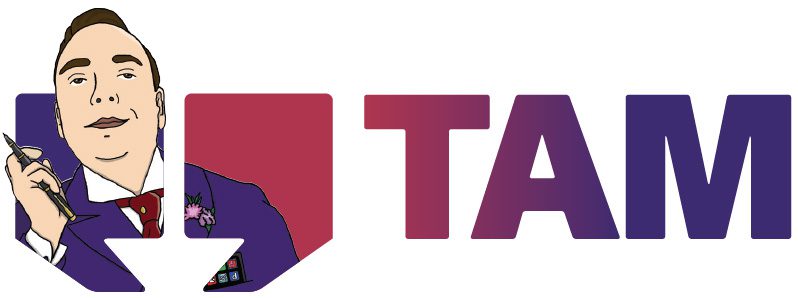The spark for this reflection was ignited by a simple act: sharing a meme that carried a message many of us in the small business community felt in our bones—"We are not doing this because it is easy; we are doing this because we thought it was easy."
The immediate and widespread connection with this sentiment among small business owners on social media over the weekend was both surprising and enlightening.
It led to a realisation that there's a shared experience, a common thread of expectation versus reality that runs through the small business world. This article delves into why this phrase struck a chord with so many and aims to unpack the layers of optimism, challenge, and the journey towards understanding that define the entrepreneurial experience.
I will make three points:
- We can all suffer from optimism bias
- We often need a Copernicus Revolution
- We need to bring people along with us if what we have or sell is unique or different

The Optimism Bias in Small Business: A Double-Edged Sword
The concept of optimism bias, a cognitive twist where individuals overestimate positive outcomes and underestimate the likelihood of negative ones, sheds light on the entrepreneurial spirit that drives the small business sector.
This phenomenon isn't just a feature of human psychology; it's observed across age groups, cultures, and even species, highlighting its deep evolutionary roots.
In the realm of small business, this bias manifests as entrepreneurs overlooking potential risks and overestimating their venture's chances of success. Here's how optimism bias specifically impacts small businesses and strategies to mitigate its effects.
Key Aspects of Optimism Bias in Small Business
- Underestimation of Risks: Entrepreneurs often minimise the chances of encountering obstacles such as financial loss or business failure, a perspective that can lead to inadequate preparation and planning.
- Evolutionary Advantages: Optimism bias isn't all bad; it provides competitive advantages by fostering resilience against stress and encouraging behaviors that support physical and mental health. This positive outlook can drive motivation and innovation within the business.
- Neuroscientific Foundations: The neurochemical dopamine plays a role in enhancing optimism bias, linking our brain's reward system to a predisposition for a more optimistic view. This biological underpinning suggests that optimism is deeply embedded in our psychology.
Managing Optimism Bias
To navigate the fine line between beneficial optimism and potentially harmful bias, small business owners can adopt several strategies:
- Balancing Optimism with Realism: While optimism fuels drive and creativity, coupling it with a realistic assessment of risks ensures better preparedness and strategic planning.
- Promoting Awareness and Education: Understanding optimism bias among team members can lead to more grounded decision-making processes.
- Preparing for All Outcomes: Recognising that business failures are common and preparing for such scenarios can temper excessive optimism, making entrepreneurs more resilient in the face of setbacks.
Navigating Expectations: The Copernican Shift in Small Business
A profound realisation that many small business owners come to, often after much frustration and energy depletion, is the misalignment between their expectations of success and the actual needs and habits of their audience.
At the core of this challenge lies a subtle yet impactful expectation: the belief that people will naturally care about our products or services as much as we do.
This expectation sets the stage for disappointment and can significantly wear down the enthusiasm and satisfaction that fuel our entrepreneurial journey.
The Expectation vs. Reality Gap
The assumption that our business will automatically be of paramount importance to our potential customers is a common pitfall. It's a belief rooted in the passion and dedication we invest in our ventures.
However, this perspective overlooks a critical aspect of successful business operations: the necessity to align closely with the habits, preferences, and needs of those we aim to serve. When our expectations of attention and success don't match the reality of our audience's interests, the journey becomes unnecessarily challenging.
Embracing the Copernican Revolution in Business
Just as the Copernican Revolution transformed our understanding of the cosmos, acknowledging that the Earth orbits the Sun, a similar paradigm shift is essential in the business world.
This shift involves recognising that our businesses must revolve around our customers, rather than expecting our customers to gravitate towards us automatically.
The realisation that we must earn our audience's care, attention, and loyalty is pivotal. It requires a deep understanding of our audience, a commitment to serving their needs, and a dedication to creating value that resonates with them.
The Path to Audience-Centricity
Achieving this alignment means:
- Understanding Your Audience: Invest time and resources in learning about your audience's behaviors, preferences, and pain points. This knowledge forms the foundation of a customer-centric strategy.
- Creating Value That Resonates: Tailor your products, services, and marketing messages to address the specific needs and desires of your audience. It's about solving their problems and enhancing their lives in meaningful ways.
- Continuous Engagement and Adaptation: The process of aligning with your audience is ongoing. It involves constant engagement, feedback collection, and adaptation to their evolving needs.
Overcoming Obstacles with Innovation: The Challenge of Introducing New Concepts
A third hurdle in the small business journey arises when introducing something unique or different to the market.
William James, a renowned American psychologist, revealed that people struggle to recognise things for which they have no existing category.
This insight is crucial for small businesses venturing into uncharted territories with their offerings.
A classic example of this is the iPhone, aptly named to fit within the familiar category of phones rather than being called a "pocket computer," which, although more accurate, might have confused potential users.
Illustrating the New with Familiar Analogies
To navigate the challenge of introducing novel concepts or technologies, it's helpful to draw on familiar analogies, much like the strategy used to explain email authentication standards.
Consider the traditional process of sending a letter, where anyone could falsely claim to be the sender.
The latest email authentication standards serve as a verification mechanism, ensuring that only the rightful sender's name appears on the "envelope."
This analogy helps demystify the technicalities of email deliverability changes, making the concept more accessible to those unfamiliar with the technical details.
Conclusion: The Power of Naming Our Challenges
The initial misconception that starting and running a business would be easy is a common experience among entrepreneurs.
However, by openly acknowledging the gap between expectation and reality, business owners can begin to navigate the complexities of entrepreneurship with a more grounded and strategic approach.
This blog post not only recognises the state of disillusionment many find themselves in but also highlights the transformative potential of facing these challenges head-on.
By understanding the importance of audience-centricity, clarity in communication, and the inevitability of obstacles, entrepreneurs can find hope and direction in their journey towards success.
Who'd expect such an insight from a funny internet meme?

